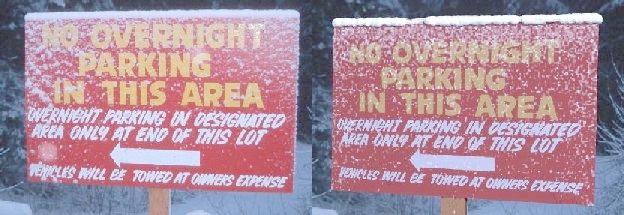| However, we were able to perform a few simple experiments to
show that our snow stability algorithms are at least plausible. We substituted
sifted flour for snow, to improve controllability and show that our algorithms
work for materials other than snow. The figure below shows a side-by-side
comparison of real and computer generated scenes. |
|
|
|
| A real flour
covered scene (left) and a computer generated scene (right) compared to
show that our stability algorithms are at least plausible. Our experimental
setup was fairly ad-hoc: despite our best efforts, flour was distributed
unevenly around the base of the real sphere. |
|
 |
|
|
|
| The picture below compares the flake dusting on a real and computer
generated sign. Note the dusting densities around the top and edges of
each sign. |
|
|
Comparison of flake dusting on a real sign
(left) and a computer generated sign (right).
|
|
 |
|

